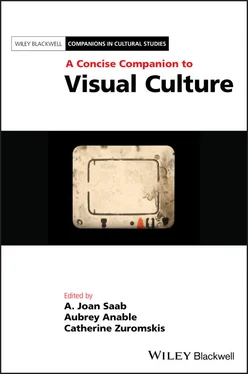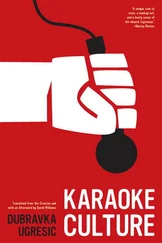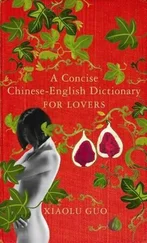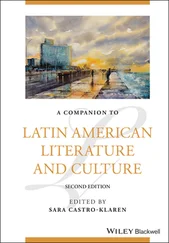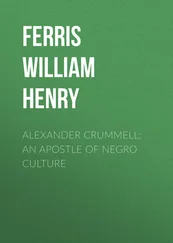Lawrence Alloway and the Long Front of Culture: From the Hierarchical Pyramid to the Horizontal Line
As for his geometric preferences, Lawrence Alloway never liked triangles. They symbolized hierarchical thinking and a logic of exclusions. His former student Shelley Rice recalls how he started one class at SUNY Stony Brook with a diatribe against the three‐sided figure, stressing its deleterious effects and even its potential for emotional harm.
Most people organize their life in hierarchies, like this triangle. They decide that certain aspects of culture are good and worthy, and they choose to ignore or deny everything else around them. This is a world view based primarily on exclusion, on willfully rejecting almost everything one experiences, and to me this depressing attitude makes no sense. Let me propose instead that we use this class to reorganize the triangle into a continuum, like this line. (Rice 2009, 78; see also Rice 2011)
Alloway then continued his opening salvo with a democratic description of a series of genres of visual and media culture that constitute this horizontal continuum and that coexist across the line. “Instead of making up hierarchies, we can place all aspects of our twentieth‐century culture along the line; paintings and comic books, highway symbols and posters and public sculptures all have an equivalent place here, coexisting and sometimes interacting as separate but equal modes of contemporary communication” (Rice 2009, 78). In this way, the painterly medium formerly valued as the pinnacle of fine art becomes just one subset of visual cultural production along Alloway’s long front of (visual) culture. The “Biographical/Historical Note” to his papers at the Getty Research Institute sums up this point quite succinctly (Lawrence Alloway Papers 1935–2003): “Scorning the limiting assumptions of a traditional art history education, he anticipated the now current concept of visual culture as early as 1957 in his essay ‘The Long Front of Culture.’”
By affirming the horizontal line as the great leveler and by taking a self‐professed “permissive approach to culture,” in praise and recognition of its long front, Alloway (1987, 31) sets himself up against conservative literary critics such as T. S. Eliot, who asserted the “essentially aristocratic nature of culture.” Alloway’s brief but path‐breaking essay therefore begins with an attack on this kind of cultural elitism and snobbery, in a horizontally driven critique that targets tradition and canonical mastery and embraces mass media as sounding their death knell. He begins thus:
The abundance of twentieth‐century communications is an embarrassment to the traditionally educated custodian of culture. The aesthetics of plenty oppose a very strong tradition which dramatizes the arts as the possession of an elite. These “keepers of the flame” master a central (not too large) body of cultural knowledge, meditate on it, and pass it on intact (possibly a little enlarged) to the children of the elite. (Alloway 1987, 31)
Refusing to serve as either an inheritor or a transmitter of this exclusive and elitist tradition, Alloway proposes a break that should be achieved through an embrace of the mass media and their products and through his own willingness to attribute the name of culture to such products. For Alloway, this explosion in mass communication media has spread like wildfire, to the extent that it cannot be contained by the “keepers of the flame.” As a corollary to this “aesthetics of plenty,” Alloway is determined to subvert any high–low distinctions in the form of fine art versus mass culture, rejecting such binary oppositions as relics of an era of scarcity that preceded “mass production techniques” and mass media. The long shadow of Walter Benjamin’s 1936 essay “The Work of Art in the Age of Mechanical Reproduction,” with its revelation of the death of the unique and auratic art object, hovers over this aspect of Alloway’s horizontal analysis. To recite this explosive argument about the importance and impact of reproductive technologies, Alloway (1987, 31) writes: “However, mass production techniques, applied to accurately repeatable words, pictures, and music, have resulted in an expendable multitude of signs and symbols. To approach this exploding field with Renaissance‐based ideas of the uniqueness of art is crippling. Acceptance of the mass media entails a shift in our notion of what culture is.” One notes the shift in diction from art (and its association with the Renaissance) to culture (and its association with the contemporary moment). For Alloway, one can no longer understand the mass‐mediated and reproducible present with outmoded “auratic” ideas—that is, ideas about the unique personal “aura” of the artist or the art object. In this way Alloway’s attack knocks high art, or what he calls “the highest artifacts,” off its pedestal. Both the “top ten” list and the pyramid’s verticality—which reaches its apex in high art—are reconfigured on the basis of a horizontal continuum. Alloway continues:
Instead of reserving the word for the highest artifacts and the noblest thoughts of history’s top ten, it needs to be used more widely as the description of “what a society does.” A reserved cultural elitism gives way to an expansive visual anthropology. Then, unique oil paintings and highly personal poems as well as mass‐distributed films and group‐aimed magazines can be placed within a continuum rather than frozen in layers in a pyramid. (1987, 31)
By placing the word “frozen” in a context that evokes the treasure tombs of ancient Egyptian kings, Alloway prompts us to read his gesture as a loosening of the art historical tradition, with its rigid hierarchies, to the benefit of a visual cultural liquidity that encompasses a wide range of genres, all equally worthy of analysis and interpretation.
The concept of horizontal thinking was not confined to this essay alone, but rather served as a recurrent theme for Alloway over the course of his successful career as a cultural critic. For example, Alloway again pitted “horizontal descriptions” against the “pyramid of culture” two years later, in an essay titled “Artists as Consumers.” There he wrote again in an anti‐hierarchical fashion, which affirmed the pop cultural icon Elvis Presley and the cubist painter Pablo Picasso in the same breath. “Instead of a pyramid with Picasso at the top and Elvis at the bottom, we need a more flexible principle. … Instead of hierarchy we would use the idea of a continuum. Then, at least, the spectator can go to the National Gallery by day and the London Pavilion by night, without getting smeared up and down the pyramid” (Alloway 1961, 15). Two decades later he would return to the idea of “horizontal description” as a methodological tool, in the context of reviewing the history of the world fair or universal exhibition (Alloway 1979, 245). While this mode of visual display commenced in the nineteenth century, it functioned as a laudable forerunner to Alloway’s horizontal thinking, because it already represented the continuum of culture in a globalized world rather than reifying traditional hierarchies and elitist pyramid schemes.
If we look at the content and at the display of the Independent Group’s famous exhibition This Is Tomorrow held at the Whitechapel Gallery in London in August–September 1956—an exhibition with a whole range of “movies, science fiction, advertising, pop music” and to which Alloway contributed a catalog essay—then it becomes clear how the long front of (visual) culture and horizontal thinking guides its configuration as well. Indeed, Alloway composed this wide‐ranging list while thinking about the Independent Group’s contact with “mass produced urban culture.” As a good horizontal thinker, he went on to problematize high–low and trivial–serious distinctions as he opened the door to visual cultural analysis. “One result of our discussion was to take Pop culture out of the realm of ‘escapism,’ ‘sheer entertainment,’ ‘relaxation’, and to treat it with the seriousness of art” (Alloway 1966, 31–32).
Читать дальше
